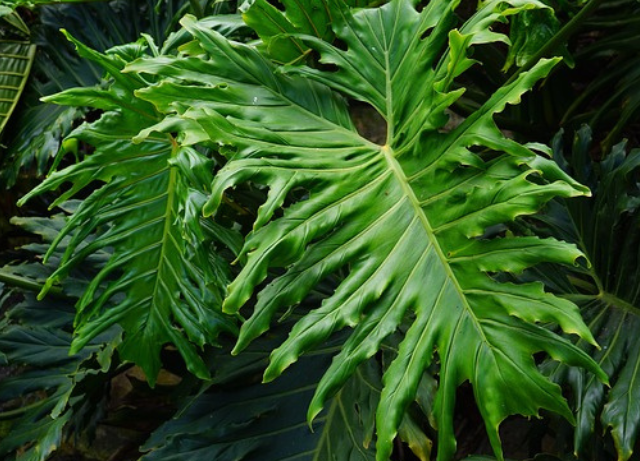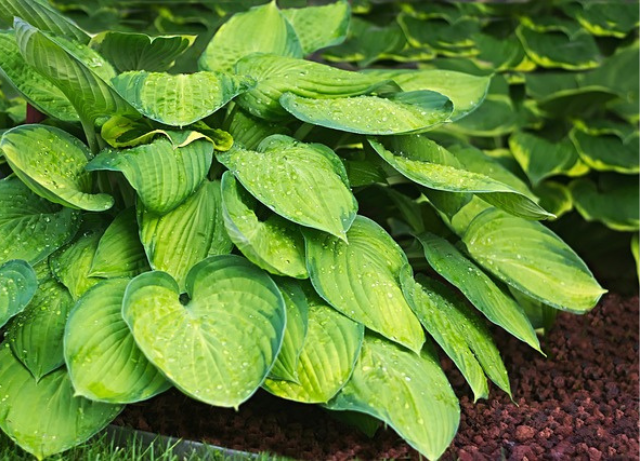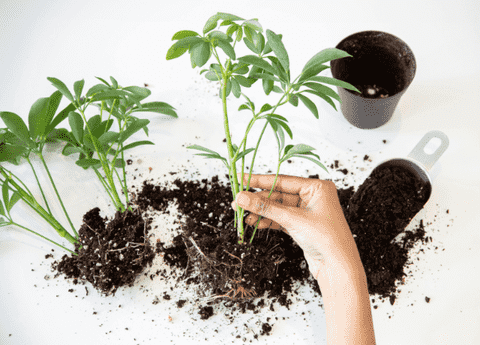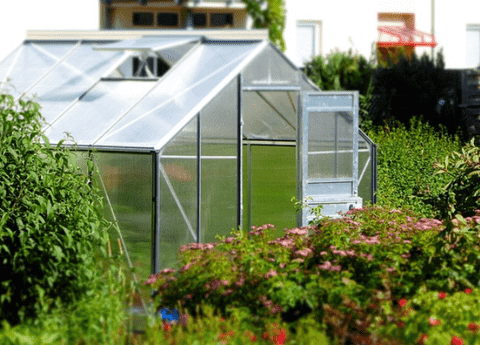Monstera Plant Care: A Guide for Grow Monstera plants
Monstera plants, with their striking, fenestrated leaves and tropical allure, have become a popular choice for indoor gardening enthusiasts. Known for their resilience and relatively low maintenance, these vibrant plants can thrive in a variety of environments, making them ideal for both novice and seasoned plant parents. In this guide, we will delve into the essential aspects of Monstera plant care, from optimal light conditions and watering schedules to tips on propagation and addressing common issues. Whether you’re looking to add a touch of greenery to your home or expand your botanical collection, learning how to properly care for a Monstera plant will ensure it remains healthy and lush.
Introduction to Monstera Plants
Understanding Monstera Varieties
Monstera plants come in several varieties, each with unique characteristics that appeal to different aesthetic preferences. The most common variety is Monstera deliciosa, known for its large, iconic leaves with natural holes. Monstera adansonii, or the Swiss Cheese Plant, features smaller leaves with more intricate perforations. Another popular variety is Monstera obliqua, which has even more dramatic fenestration and a more delicate leaf structure. Understanding these differences can help you choose the right Monstera for your space and care routine. Each variety has slightly different needs, but they generally thrive under similar conditions. Knowing what to expect from your specific Monstera variety will make it easier to provide the best care and recognize any issues early on.
Benefits of Growing Monstera
Growing Monstera plants offers several benefits beyond their aesthetic appeal. These plants are known for their air-purifying qualities, helping to remove toxins like formaldehyde and benzene from indoor environments. This makes them a great addition to any home or office, contributing to a healthier living space. Additionally, Monstera plants are relatively low-maintenance, making them an excellent choice for busy individuals or those new to plant care. Their resilience means they can adapt to various light conditions, though they thrive best in bright, indirect light. The lush, green foliage of Monstera plants can also improve your mood and reduce stress, adding a touch of nature to your indoor spaces. Overall, the combination of aesthetic beauty, health benefits, and ease of care makes Monstera plants a popular and rewarding choice for indoor gardening enthusiasts.
Common Misconceptions
There are several misconceptions about Monstera plants that can lead to improper care. One common myth is that Monstera plants require direct sunlight to thrive. In reality, they prefer bright, indirect light, as direct sunlight can scorch their leaves. Another misconception is that these plants need frequent watering. Overwatering can actually harm Monstera plants, as they are prone to root rot. Make sure the soil dries completely between watering intervals. Some people also believe that Monstera plants grow slowly. While they can take time to establish, under the right conditions, they can grow quite rapidly. Lastly, there’s a belief that Monstera plants are difficult to propagate. Propagation is relatively straightforward with the right techniques, such as using stem cuttings. Understanding and debunking these misconceptions can help you provide better care and enjoy a healthier, more vibrant Monstera plant.
Essential Monstera Plant Care Tips
Ideal Light Conditions
Monstera plants thrive best in bright, indirect light. Direct sunlight can be too harsh and may cause the leaves to burn or develop brown spots. An ideal location for a Monstera is near a window with filtered light or in a room that receives ample natural light throughout the day. If natural light is limited, Monstera plants can adapt to lower light conditions, but their growth may be slower, and the leaves may not develop as many fenestrations. Using sheer curtains or placing the plant a few feet away from a window can help ensure it gets the right amount of light without exposure to direct sun. Additionally, rotating the plant every few weeks can help it grow evenly, as all sides will receive light. Understanding the ideal light conditions for your Monstera will promote healthy growth and vibrant foliage.
Watering Best Practices
Ensuring your Monstera plant receives adequate watering is crucial for its health. These plants prefer soil that remains consistently moist but not waterlogged. To avoid root rot, a common and potentially fatal issue caused by overwatering, ensure the top inch of soil dries out between watering sessions.. A good guideline is to water your Monstera once the top layer of soil feels dry to the touch. During the growing season, typically spring and summer, your Monstera may need more frequent watering. Conversely, reduce watering during the dormant winter months. Using a pot with drainage holes is crucial to ensure excess water drains away, preventing water buildup at the roots. By following these watering practices, you can help your Monstera thrive and maintain its lush, vibrant appearance.
Soil and Potting Needs
Choosing the right soil and pot is vital for the well-being of your Monstera plant. Monstera plants thrive in well-draining soil that retains some moisture but dries out sufficiently between waterings. A mix of potting soil, peat, and perlite or orchid bark works well to provide the right balance. This blend ensures proper aeration and prevents the soil from becoming compacted, which can impede root growth.
When it comes to potting, selecting a pot with drainage holes is crucial to avoid waterlogging. As Monstera plants grow, they may need to be repotted every one to two years. Select a pot that is one size larger than the current one to allow the roots to expand. Repotting also provides an opportunity to refresh the soil and remove any dead or decaying roots. Proper soil and potting practices will support healthy root development and overall plant vitality.
Troubleshooting Common Issues
Identifying Pests and Diseases
Monstera plants can occasionally fall victim to pests and diseases, which can hinder their growth and vitality. Common pests include spider mites, mealybugs, and scale insects. Spider mites are tiny and often leave fine webbing on the plant, while mealybugs appear as small, white cotton-like clusters. Scale insects are usually brown and attach themselves to the stems and leaves. Regularly inspecting your Monstera can help catch these issues early.
Diseases such as root rot and leaf spot can also affect Monstera plants. Root rot is often caused by overwatering and poor drainage, leading to mushy roots and yellowing leaves. Leaf spot appears as dark, water-soaked lesions on the leaves and is usually a result of fungal or bacterial infections.
Early detection and prompt action are key to managing these problems. Treat pests with insecticidal soap or neem oil, and address diseases by improving watering practices and ensuring proper ventilation. This proactive approach will help maintain your Monstera’s health.
Addressing Yellowing Leaves
Yellowing leaves on a Monstera plant can be a sign of various issues. One common cause is overwatering, which can lead to root rot and nutrient deficiencies. To address this, ensure the soil is well-draining and allow the top inch to dry out before watering again. Another possible cause is inadequate light. Monstera plants need bright, indirect light to thrive, so consider moving your plant to a better-lit location if it’s not receiving enough light.
Nutrient deficiencies can also result in yellowing leaves. If this is the case, a balanced, water-soluble fertilizer can help replenish essential nutrients. Additionally, be on the lookout for pest infestations, as pests like spider mites and mealybugs can stress the plant and cause yellowing.
Lastly, natural aging can cause older leaves to yellow and drop off. Regularly remove these leaves to keep the plant looking healthy. Identifying the root cause will help you take appropriate action to restore your Monstera’s health.
Managing Overgrowth and Pruning
Monstera plants can grow quite vigorously under the right conditions, sometimes leading to overgrowth that can become unmanageable. Pruning is an effective way to manage this Growth and ensure your plant remains healthy and aesthetically pleasing. Start by identifying any yellowing, damaged, or dead leaves and remove them using clean, sharp pruning shears. This not only enhances the plant’s appearance but also helps prevent the spread of disease.
To control size and shape, target any excessively long stems or branches. Promote new growth by trimming right above a leaf node. If your Monstera is getting too wide, you can also trim back some of the outer leaves and stems. It’s generally best to prune during the growing season, typically in spring and summer, to promote quicker recovery and regrowth.
Regular pruning helps direct the plant’s energy towards new, healthy growth and keeps it in a manageable size, making it a vital part of Monstera care.







